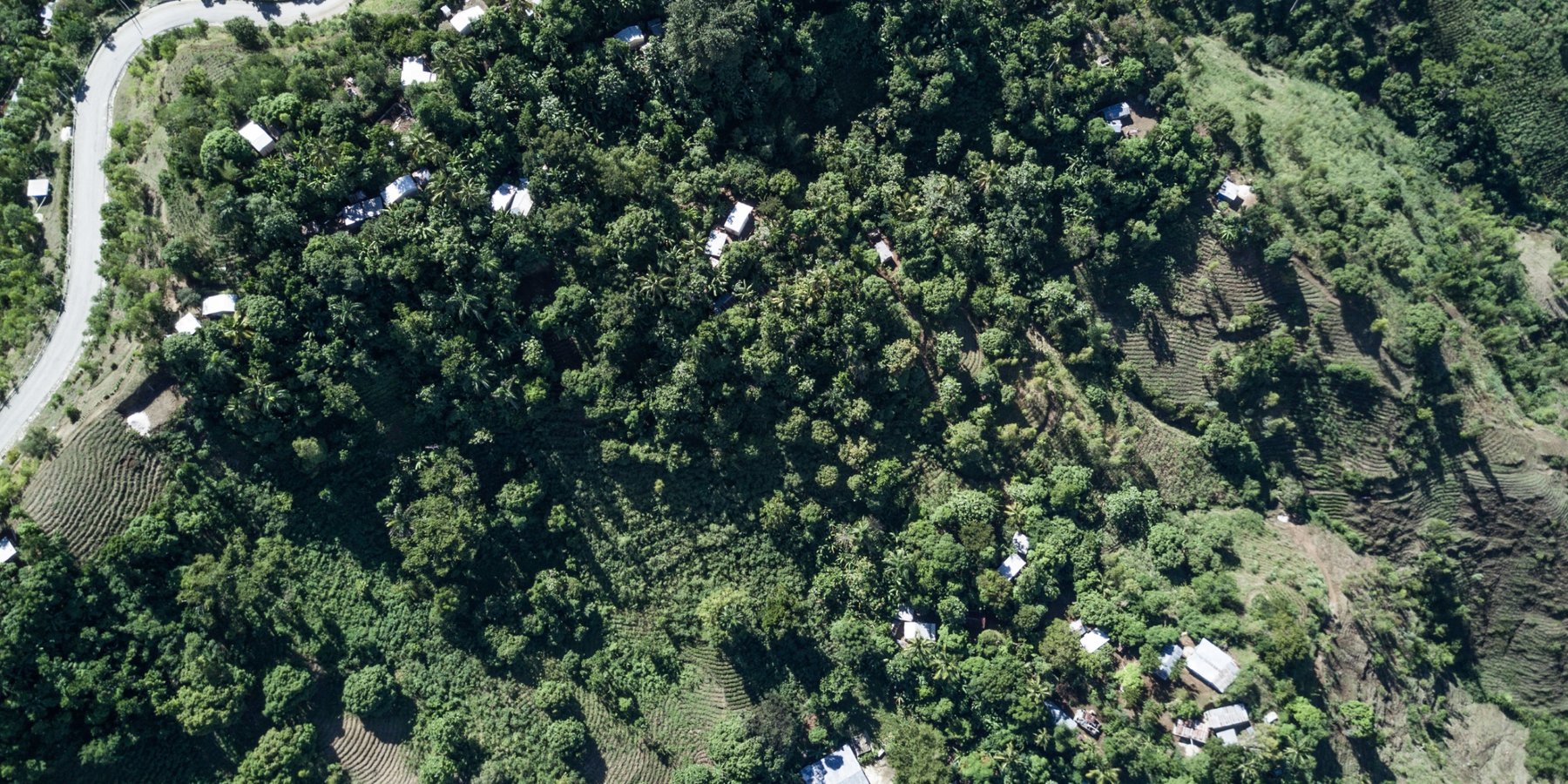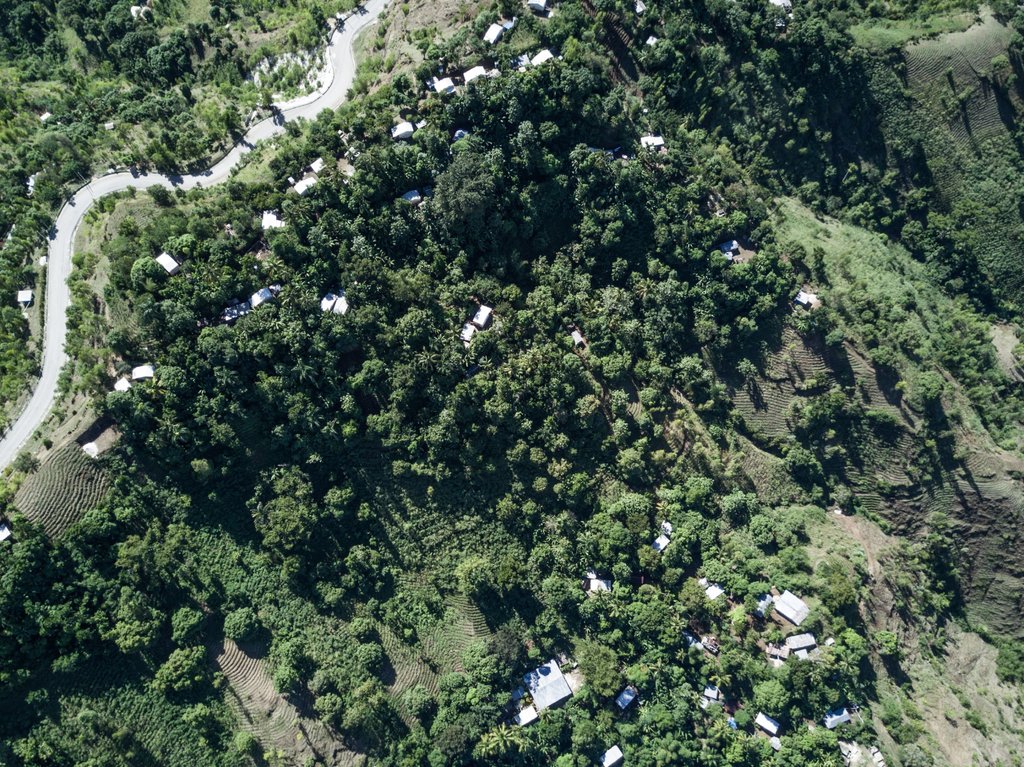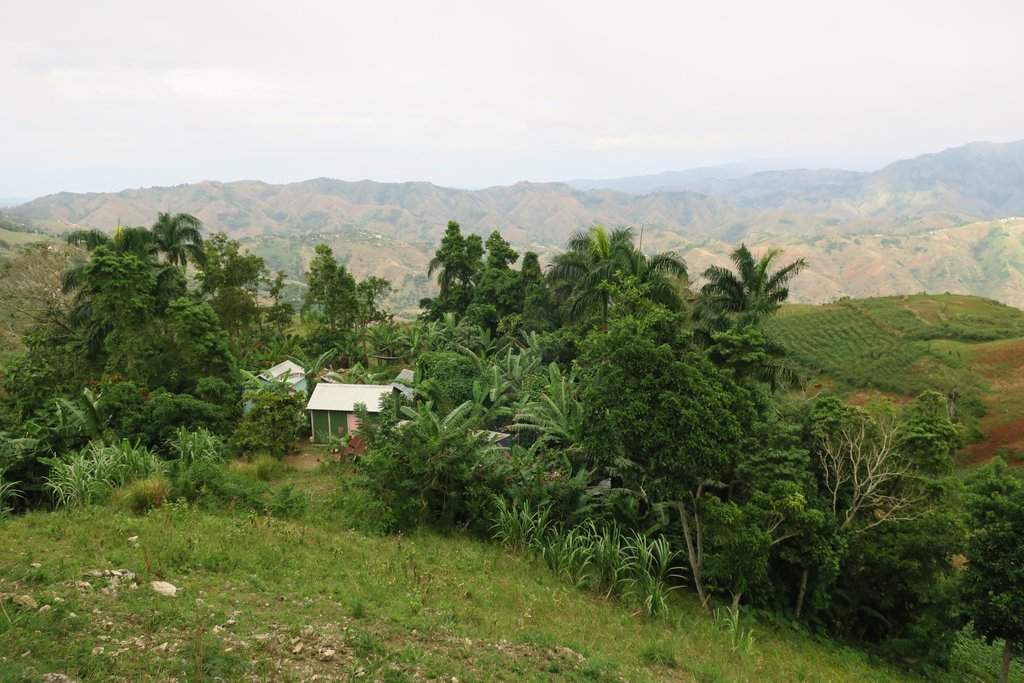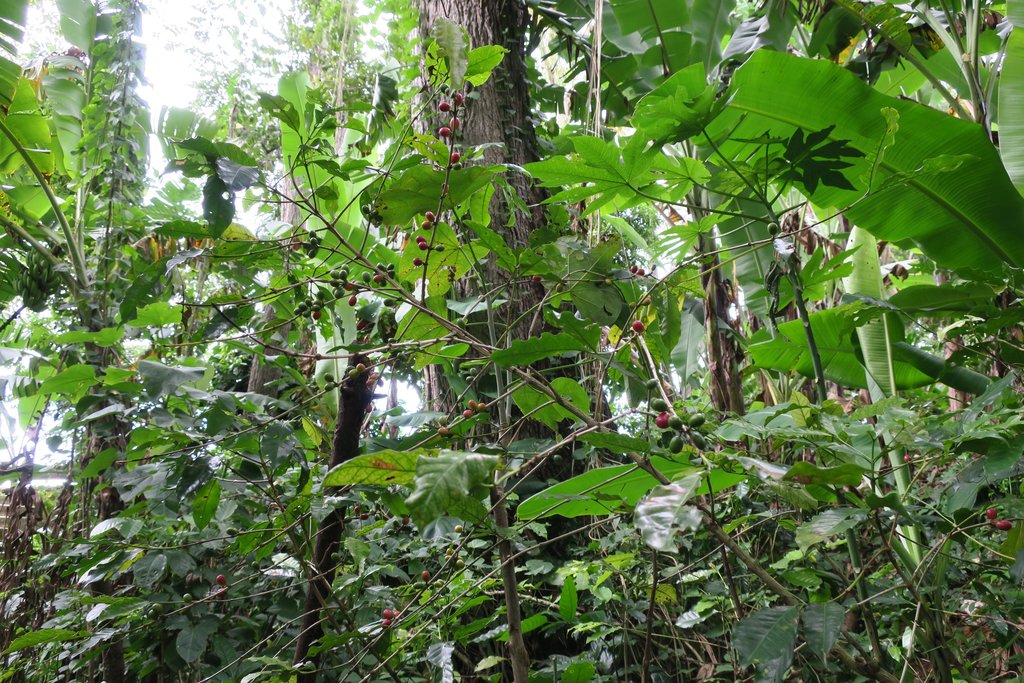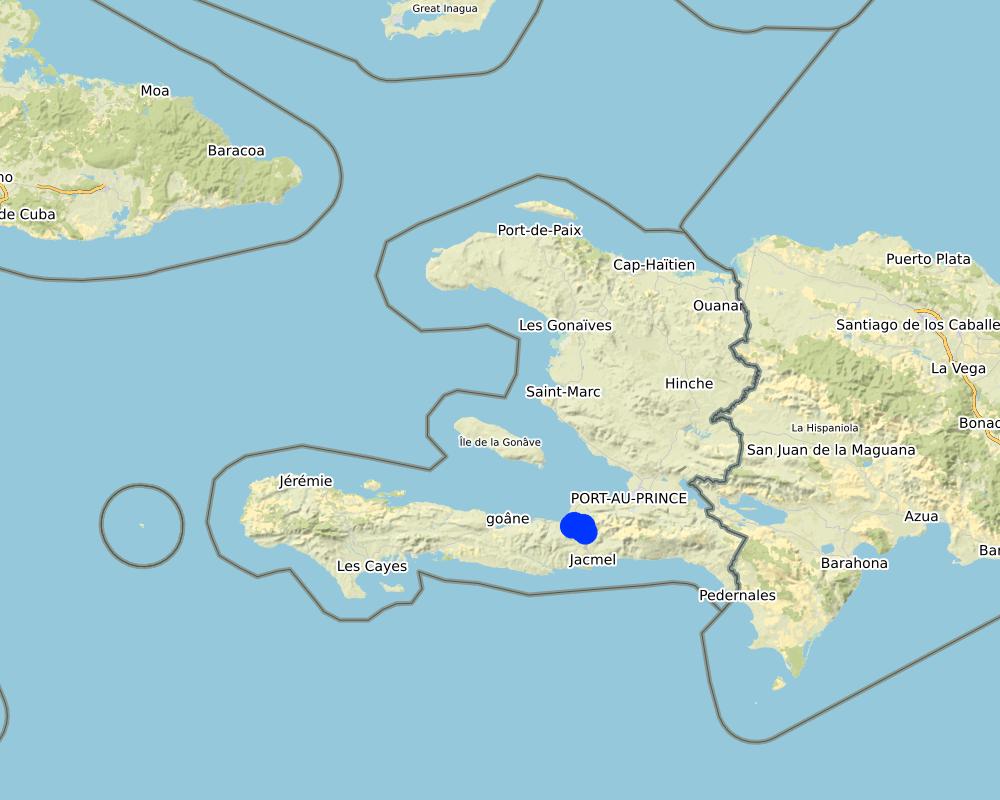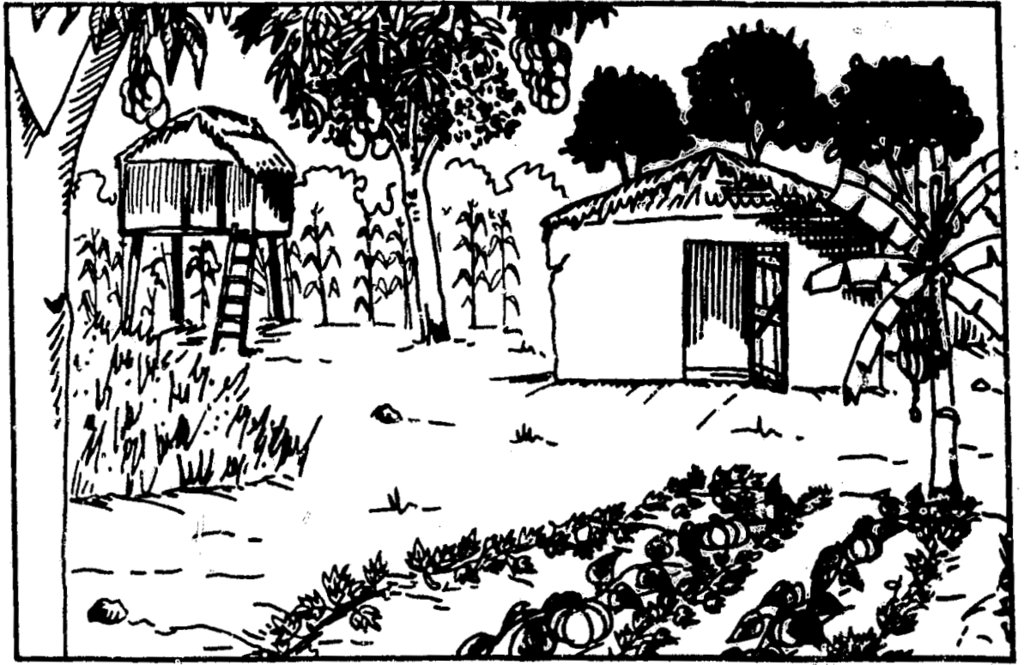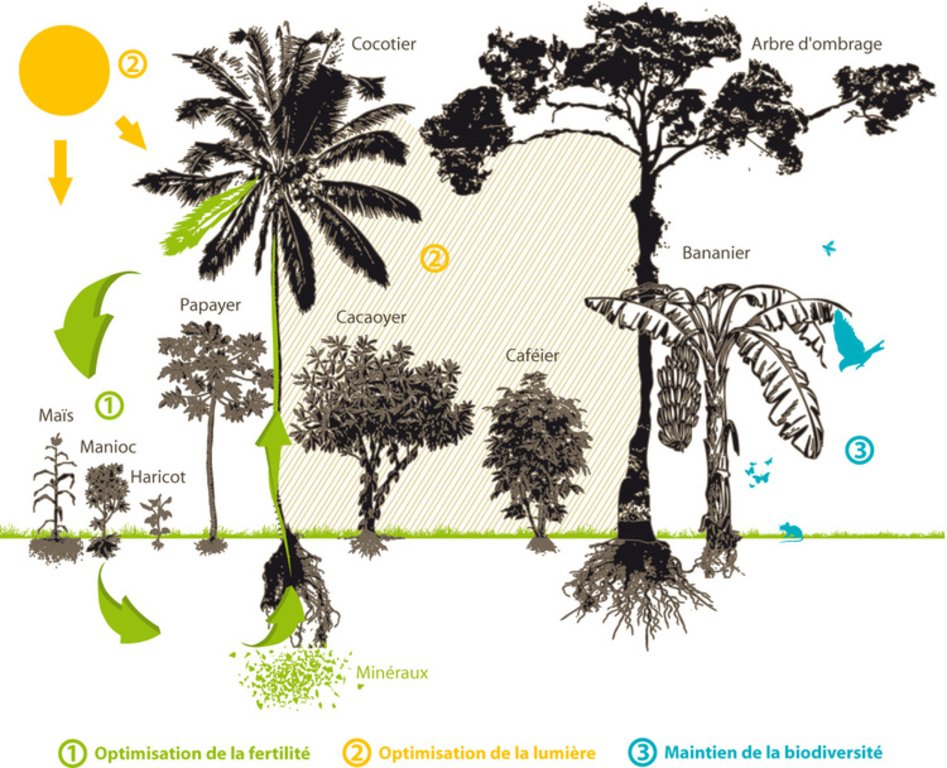Agro-silvo-pastoralism around homesteads [Haiti]
- Creation:
- Update:
- Compiler: Joana Eichenberger
- Editors: Hanspeter Liniger, Jean Carls Dessin
- Reviewer: Hanspeter Liniger
Jardin de case
technologies_3227 - Haiti
- Full summary as PDF
- Full summary as PDF for print
- Full summary in the browser
- Full summary (unformatted)
- Agro-silvo-pastoralisme: Feb. 15, 2019 (inactive)
- Agro-silvo-pastoralism around houses: Feb. 24, 2019 (inactive)
- Agro-silvo-pastoralism around homesteads: April 16, 2020 (inactive)
- Agroforestry homegardens: June 16, 2020 (inactive)
- Agroforestry homegardens: June 27, 2021 (inactive)
- Agroforestry homegardens: June 27, 2021 (public)
View sections
Expand all Collapse all1. General information
1.2 Contact details of resource persons and institutions involved in the assessment and documentation of the Technology
land user:
Dieufort Laurore
Haiti
Name of the institution(s) which facilitated the documentation/ evaluation of the Technology (if relevant)
Swiss Red Cross (Swiss Red Cross) - Switzerland1.3 Conditions regarding the use of data documented through WOCAT
The compiler and key resource person(s) accept the conditions regarding the use of data documented through WOCAT:
Yes
1.4 Declaration on sustainability of the described Technology
Is the Technology described here problematic with regard to land degradation, so that it cannot be declared a sustainable land management technology?
No
2. Description of the SLM Technology
2.1 Short description of the Technology
Definition of the Technology:
Agroforestry is a way of incorporating agricultural land with trees, crops and / or livestock. The technology increases and diversifies production, generating social, economic and environmental benefits. In addition, planted around houses, trees offer protection against hurricanes.
2.2 Detailed description of the Technology
Description:
In Léogâne, agroforestry systems can be found in home gardens for subsistence and on the northern slopes where it is wetter.
They are often agro-silvo-pastoralist systems, since it includes animal production: For example when land users take their cattle into these small forests and give them old banana trunks to eat. The animal excrement fertilizes the soil.
The objective of agroforestry is the cultivation of edible products while preserving natural resources and reconciling economy with ecology. In contrast to weeded/ ploughed crops, agroforestry does not accelerate soil erosion when applied on slopes and benefits the water regime. Rainwater can better infiltrate, reducing runoff and replenishing groundwater. If applied in watersheds, agroforestry systems not only protect springs, but also villages and cropland downstream.
Agroforestry systems initiate by planting different fruit trees in the home garden. However, land users often profit from the shade of remaining trees of the abundant vegetation that once covered the country and plant fruit trees and cash crops in the understory.
The crops most used for agroforestry in Léogâne are banana, coffee, cocoa, pomelo and yam. There is no particular system in which they are established, but they are equally distributed in a forest or field. For maintenance they pull out noxious weeds that compete with the crops, harvest the products and replant if necessary.
Agroforestry has the potential to improve the quantity and quality of springs, stabilise the soil with deep rooted trees, reduce the risk of flooding to downstream areas and offer protection of settlements against hurricanes. Land users appreciate that this technology offers a great diversity of products and year round harvest. Coffee and cocoa, for example, are cash crops and can substantially increase their income. What is not preferred by land users is the time it takes to receive benefits from the first harvest in agroforestry systems.
2.3 Photos of the Technology
2.5 Country/ region/ locations where the Technology has been applied and which are covered by this assessment
Country:
Haiti
Region/ State/ Province:
Département de l'Ouest
Further specification of location:
Léogâne
Specify the spread of the Technology:
- applied at specific points/ concentrated on a small area
Is/are the technology site(s) located in a permanently protected area?
No
Map
×2.6 Date of implementation
If precise year is not known, indicate approximate date:
- more than 50 years ago (traditional)
2.7 Introduction of the Technology
Specify how the Technology was introduced:
- as part of a traditional system (> 50 years)
Comments (type of project, etc.):
Before having all cleared, Haitians frequently cultivated using agroforestry systems.
3. Classification of the SLM Technology
3.1 Main purpose(s) of the Technology
- improve production
- reduce, prevent, restore land degradation
- conserve ecosystem
- protect a watershed/ downstream areas – in combination with other Technologies
- preserve/ improve biodiversity
- reduce risk of disasters
- create beneficial economic impact
3.2 Current land use type(s) where the Technology is applied
Land use mixed within the same land unit:
Yes
Specify mixed land use (crops/ grazing/ trees):
- Agro-silvopastoralism

Cropland
- Annual cropping
- Perennial (non-woody) cropping
- Tree and shrub cropping
Annual cropping - Specify crops:
- root/tuber crops - sweet potatoes, yams, taro/cocoyam, other
Perennial (non-woody) cropping - Specify crops:
- banana/plantain/abaca
Tree and shrub cropping - Specify crops:
- avocado
- cacao
- coffee, shade grown
- mango, mangosteen, guava
- papaya
- pomelo, breadfruit (artocarpus altilis)
Specify:
Harvest all year round
Is crop rotation practiced?
No
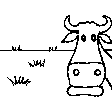
Grazing land
- Cattle and goats are brought into the forest, tied to a tree or pole and fed with old banana trunks
Animal type:
- cattle - dairy
- cattle - non-dairy beef
- goats
Is integrated crop-livestock management practiced?
Yes
If yes, specify:
The old banana trunks are given to the cattle, the excrements serve as fertilizer
Products and services:
- meat
- milk
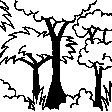
Forest/ woodlands
- (Semi-)natural forests/ woodlands
(Semi-)natural forests/ woodlands: Specify management type:
- Selective felling
- Non-wood forest use
Type of (semi-)natural forest:
- subtropical humid forest natural vegetation
- tropical rain forest natural vegetation
- Samanea Saman
Are the trees specified above deciduous or evergreen?
- deciduous
Products and services:
- Fruits and nuts
- Other forest products
- Grazing/ browsing
- Nature conservation/ protection
- Protection against natural hazards
3.3 Has land use changed due to the implementation of the Technology?
Has land use changed due to the implementation of the Technology?
- No (Continue with question 3.4)
3.4 Water supply
Water supply for the land on which the Technology is applied:
- rainfed
3.5 SLM group to which the Technology belongs
- agroforestry
- improved ground/ vegetation cover
- ecosystem-based disaster risk reduction
3.6 SLM measures comprising the Technology

vegetative measures
- V1: Tree and shrub cover
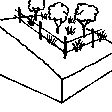
management measures
- M1: Change of land use type
Comments:
M1: planting trees where there weren't any, afforestation
3.7 Main types of land degradation addressed by the Technology

soil erosion by water
- Wt: loss of topsoil/ surface erosion
- Wg: gully erosion/ gullying
- Wm: mass movements/ landslides
- Wo: offsite degradation effects

biological degradation
- Bc: reduction of vegetation cover
- Bh: loss of habitats
- Bq: quantity/ biomass decline
- Bs: quality and species composition/ diversity decline
- Bl: loss of soil life
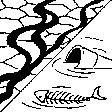
water degradation
- Ha: aridification
- Hs: change in quantity of surface water
- Hg: change in groundwater/aquifer level
- Hp: decline of surface water quality
3.8 Prevention, reduction, or restoration of land degradation
Specify the goal of the Technology with regard to land degradation:
- prevent land degradation
- reduce land degradation
4. Technical specifications, implementation activities, inputs, and costs
4.1 Technical drawing of the Technology
Technical specifications (related to technical drawing):
In the Mornes in Léogâne, almost all houses have a small garden around them. In those gardens, one can find bananas, papayas, corn, sweet potatoes, cassava or spinach, chickens, goats, and more. These are small agro-silvo-pastoralist systems.
Author:
Ashley and Levine
Date:
1987
Technical specifications (related to technical drawing):
Sometimes, the land users profit from existing large trees (e.g. Samanea Saman) to grow coffee, bananas, pomelo, yam etc. beneath them. An agroforestry system optimizes light, provides rich and abundant organic matter, and contributes greatly to maintaining the balance of the ecosystem.
Author:
Ethiquable
Date:
2013
4.2 General information regarding the calculation of inputs and costs
Specify how costs and inputs were calculated:
- per Technology area
Indicate size and area unit:
0.5ha
other/ national currency (specify):
HTG
If relevant, indicate exchange rate from USD to local currency (e.g. 1 USD = 79.9 Brazilian Real): 1 USD =:
62.0
Indicate average wage cost of hired labour per day:
200 HTG
4.3 Establishment activities
| Activity | Timing (season) | |
|---|---|---|
| 1. | Plant fruit / forest trees around the house, if there are already some, all the better. | March / April (before big rainy season) |
| 2. | Plant crops between the trees | March / April (before big rainy season) |
4.4 Costs and inputs needed for establishment
| Specify input | Unit | Quantity | Costs per Unit | Total costs per input | % of costs borne by land users | |
|---|---|---|---|---|---|---|
| Labour | Labour | person-days | 10.0 | 200.0 | 2000.0 | 100.0 |
| Equipment | Hoe | pieces | 1.0 | 5.0 | 5.0 | 100.0 |
| Equipment | Pickaxe | pieces | 1.0 | 5.0 | 5.0 | 100.0 |
| Equipment | Machete | pieces | 1.0 | 5.0 | 5.0 | 100.0 |
| Plant material | Banana tree | cutting | 10.0 | 75.0 | 750.0 | 100.0 |
| Plant material | Cacao tree seeds | milk powder tin | 0.25 | 500.0 | 125.0 | 100.0 |
| Plant material | Coffee tree seeds | milk powder tin | 0.25 | 500.0 | 125.0 | 100.0 |
| Plant material | Coconut tree | cutting | 3.0 | 500.0 | 1500.0 | 100.0 |
| Plant material | Mango tree | cutting | 1.0 | 100.0 | 100.0 | 100.0 |
| Plant material | Papaya tree | cutting | 3.0 | 30.0 | 90.0 | 100.0 |
| Total costs for establishment of the Technology | 4705.0 | |||||
| Total costs for establishment of the Technology in USD | 75.89 | |||||
Comments:
Land users have the necessary tools (the 5 HTGs are budgeted as compensation cost for using their own tools).
4.5 Maintenance/ recurrent activities
| Activity | Timing/ frequency | |
|---|---|---|
| 1. | Weeding during the first 2 years | First 2x a year and after 2 years only when necessary (about 1 once a year) |
| 2. | Harvest | throughout the year |
| 3. | Cut banana trunks to give cattle | throughout the year |
| 4. | Plant new fruit trees | March / April, frequency depends on the plant |
Comments:
During the first 2 years, it is necessary weed. Afterwards, when the trees have grown and there is enough shade, there will almost no weed.
4.6 Costs and inputs needed for maintenance/ recurrent activities (per year)
| Specify input | Unit | Quantity | Costs per Unit | Total costs per input | % of costs borne by land users | |
|---|---|---|---|---|---|---|
| Labour | Labour for maintenance | person-days | 50.0 | 200.0 | 10000.0 | 100.0 |
| Equipment | Machete | pieces | 1.0 | 5.0 | 5.0 | 100.0 |
| Equipment | Hoe | pieces | 1.0 | 5.0 | 5.0 | 100.0 |
| Equipment | Pickaxe | pieces | 1.0 | 5.0 | 5.0 | 100.0 |
| Plant material | Cacao tree (economic lifetime +/- 20yrs) | milk powder tin | 0.5 | 500.0 | 250.0 | 100.0 |
| Plant material | Coffee tree (economic lifetime +/- 20yrs) | milk powder tin | 0.5 | 500.0 | 250.0 | 100.0 |
| Plant material | Papaya tree (economic lifetime +/- 4yrs) | cutting | 3.0 | 30.0 | 90.0 | 100.0 |
| Plant material | Coconut tree (economic lifetime +/- 15-60yrs) | cutting | 3.0 | 500.0 | 1500.0 | 100.0 |
| Plant material | Mango tree (economic lifetime >100yrs) | cutting | 1.0 | 100.0 | 100.0 | 100.0 |
| Total costs for maintenance of the Technology | 12205.0 | |||||
| Total costs for maintenance of the Technology in USD | 196.85 | |||||
Comments:
Depending on the crops, there is no need to buy new ones: bananas, for instance, makes seedlings and a mango tree has an economic lifetime of more than 100 years.
Land users have the necessary tools (the 5 HTGs are budgeted as compensation cost for using their own tools).
4.7 Most important factors affecting the costs
Describe the most determinate factors affecting the costs:
The price of seeds: If some seeds from the last harvest are kept, there is no need to buy (many) new ones the next season. The price of the seeds varies seasonally. At the time of the harvest prices are low, and in March (beginning of the planting season), they are higher. By planting crops that regrow every season or trees with a long economic life, money can be saved on the cost of seeds.
5. Natural and human environment
5.1 Climate
Annual rainfall
- < 250 mm
- 251-500 mm
- 501-750 mm
- 751-1,000 mm
- 1,001-1,500 mm
- 1,501-2,000 mm
- 2,001-3,000 mm
- 3,001-4,000 mm
- > 4,000 mm
Specifications/ comments on rainfall:
he windward sides (north-facing slopes) receive more rain than the leeward sides.
Léogâne has a tropical climate with a rainy season ranging from April to November (with two peaks in April-May and August-October) and a dry season from the end of November to March. The relative decrease in rainfall in June and July is called the "mid-summer drought". Due to climate change, the rainy season tends to start later than it used to.
Agro-climatic zone
- sub-humid
Mean annual temperature: 25-27°C
5.2 Topography
Slopes on average:
- flat (0-2%)
- gentle (3-5%)
- moderate (6-10%)
- rolling (11-15%)
- hilly (16-30%)
- steep (31-60%)
- very steep (>60%)
Landforms:
- plateau/plains
- ridges
- mountain slopes
- hill slopes
- footslopes
- valley floors
Altitudinal zone:
- 0-100 m a.s.l.
- 101-500 m a.s.l.
- 501-1,000 m a.s.l.
- 1,001-1,500 m a.s.l.
- 1,501-2,000 m a.s.l.
- 2,001-2,500 m a.s.l.
- 2,501-3,000 m a.s.l.
- 3,001-4,000 m a.s.l.
- > 4,000 m a.s.l.
Indicate if the Technology is specifically applied in:
- not relevant
Comments and further specifications on topography:
Agroforestry gardens do not depend on topography.
5.3 Soils
Soil depth on average:
- very shallow (0-20 cm)
- shallow (21-50 cm)
- moderately deep (51-80 cm)
- deep (81-120 cm)
- very deep (> 120 cm)
Soil texture (topsoil):
- medium (loamy, silty)
- fine/ heavy (clay)
Soil texture (> 20 cm below surface):
- medium (loamy, silty)
- fine/ heavy (clay)
Topsoil organic matter:
- high (>3%)
5.4 Water availability and quality
Ground water table:
5-50 m
Availability of surface water:
medium
Water quality (untreated):
poor drinking water (treatment required)
Is water salinity a problem?
No
Is flooding of the area occurring?
No
5.5 Biodiversity
Species diversity:
- high
Habitat diversity:
- high
5.6 Characteristics of land users applying the Technology
Sedentary or nomadic:
- Sedentary
Market orientation of production system:
- mixed (subsistence/ commercial)
Off-farm income:
- less than 10% of all income
Relative level of wealth:
- poor
Individuals or groups:
- groups/ community
Level of mechanization:
- manual work
Gender:
- women
- men
Age of land users:
- youth
- middle-aged
Indicate other relevant characteristics of the land users:
Normally the women do the harvest. People of all ages help.
5.7 Average area of land used by land users applying the Technology
- < 0.5 ha
- 0.5-1 ha
- 1-2 ha
- 2-5 ha
- 5-15 ha
- 15-50 ha
- 50-100 ha
- 100-500 ha
- 500-1,000 ha
- 1,000-10,000 ha
- > 10,000 ha
Is this considered small-, medium- or large-scale (referring to local context)?
- small-scale
5.8 Land ownership, land use rights, and water use rights
Land ownership:
- individual, not titled
Land use rights:
- open access (unorganized)
Water use rights:
- open access (unorganized)
- communal (organized)
5.9 Access to services and infrastructure
health:
- poor
- moderate
- good
education:
- poor
- moderate
- good
technical assistance:
- poor
- moderate
- good
employment (e.g. off-farm):
- poor
- moderate
- good
markets:
- poor
- moderate
- good
energy:
- poor
- moderate
- good
roads and transport:
- poor
- moderate
- good
drinking water and sanitation:
- poor
- moderate
- good
financial services:
- poor
- moderate
- good
- poor
- moderate
- good
Comments:
If there are many houses together and the small-scale agroforestry systems form a medium-scale one (see cover picture), the drinking water is improved as well (moderately).
6. Impacts and concluding statements
6.1 On-site impacts the Technology has shown
Socio-economic impacts
Production
crop production
crop quality
risk of production failure
product diversity
production area
Water availability and quality
drinking water availability
drinking water quality
Income and costs
expenses on agricultural inputs
farm income
Socio-cultural impacts
food security/ self-sufficiency
SLM/ land degradation knowledge
Ecological impacts
Water cycle/ runoff
water quantity
water quality
surface runoff
evaporation
Soil
soil moisture
soil cover
soil loss
soil crusting/ sealing
Biodiversity: vegetation, animals
Vegetation cover
biomass/ above ground C
plant diversity
Climate and disaster risk reduction
flood impacts
landslides/ debris flows
drought impacts
impacts of cyclones, rain storms
emission of carbon and greenhouse gases
6.2 Off-site impacts the Technology has shown
water availability
reliable and stable stream flows in dry season
downstream flooding
downstream siltation
buffering/ filtering capacity
damage on neighbours' fields
damage on public/ private infrastructure
6.3 Exposure and sensitivity of the Technology to gradual climate change and climate-related extremes/ disasters (as perceived by land users)
Climate-related extremes (disasters)
Meteorological disasters
| How does the Technology cope with it? | |
|---|---|
| tropical storm | well |
| local rainstorm | well |
Climatological disasters
| How does the Technology cope with it? | |
|---|---|
| drought | well |
Hydrological disasters
| How does the Technology cope with it? | |
|---|---|
| landslide | well |
Comments:
Hard to say if seasonal precipitation increases or decreases. However, they vary more strongly than before.
6.4 Cost-benefit analysis
How do the benefits compare with the establishment costs (from land users’ perspective)?
Short-term returns:
slightly positive
Long-term returns:
very positive
How do the benefits compare with the maintenance/ recurrent costs (from land users' perspective)?
Short-term returns:
positive
Long-term returns:
positive
6.5 Adoption of the Technology
- > 50%
Of all those who have adopted the Technology, how many did so spontaneously, i.e. without receiving any material incentives/ payments?
- 91-100%
6.6 Adaptation
Has the Technology been modified recently to adapt to changing conditions?
No
6.7 Strengths/ advantages/ opportunities of the Technology
| Strengths/ advantages/ opportunities in the land user’s view |
|---|
| Year-round production |
| Diversity of production |
| Increased income through cash crops (coffee, cocoa) |
| Strengths/ advantages/ opportunities in the compiler’s or other key resource person’s view |
|---|
| Conservation of biodiversity |
| Creation of microclimate |
| CO2 sequestration |
| Soil and water conservation |
| Protecting homes against strong winds |
| Protection of downstream areas from flooding and siltation |
6.8 Weaknesses/ disadvantages/ risks of the Technology and ways of overcoming them
| Weaknesses/ disadvantages/ risks in the land user’s view | How can they be overcome? |
|---|---|
| The first harvest is late. | This is a big challenge because land users in the area live from hand to mouth. This can be overcome by combining it with Terra Preta raised garden beds (see documented technology in WOCAT database). Like this, the land users have something to eat while waiting for the trees to grow. |
| Weaknesses/ disadvantages/ risks in the compiler’s or other key resource person’s view | How can they be overcome? |
|---|---|
| Difficult to convince land users because the benefits are rather in the long-term. | It’s necessary to raise the land users’ awareness on all the benefits of this technology. |
7. References and links
7.1 Methods/ sources of information
- field visits, field surveys
Field visits with land users
- interviews with SLM specialists/ experts
Jean Carls Dessin
When were the data compiled (in the field)?
11/10/2017
7.2 References to available publications
Title, author, year, ISBN:
Ashley, M.D. & Levine, D.S. (1987). Agroforestry outreach project: Main text. The final report of the University of Maine.
Available from where? Costs?
http://pdf.usaid.gov/pdf_docs/pnaaz980.pdf
Title, author, year, ISBN:
Ethicable (2013): Pourquoi nous soutenons l'agroforesterie.
Available from where? Costs?
http://www.ethiquable.coop/page-dactualites-mag/pourquoi-nous-soutenons-lagroforesterie
Links and modules
Expand all Collapse allLinks
No links
Modules
No modules


